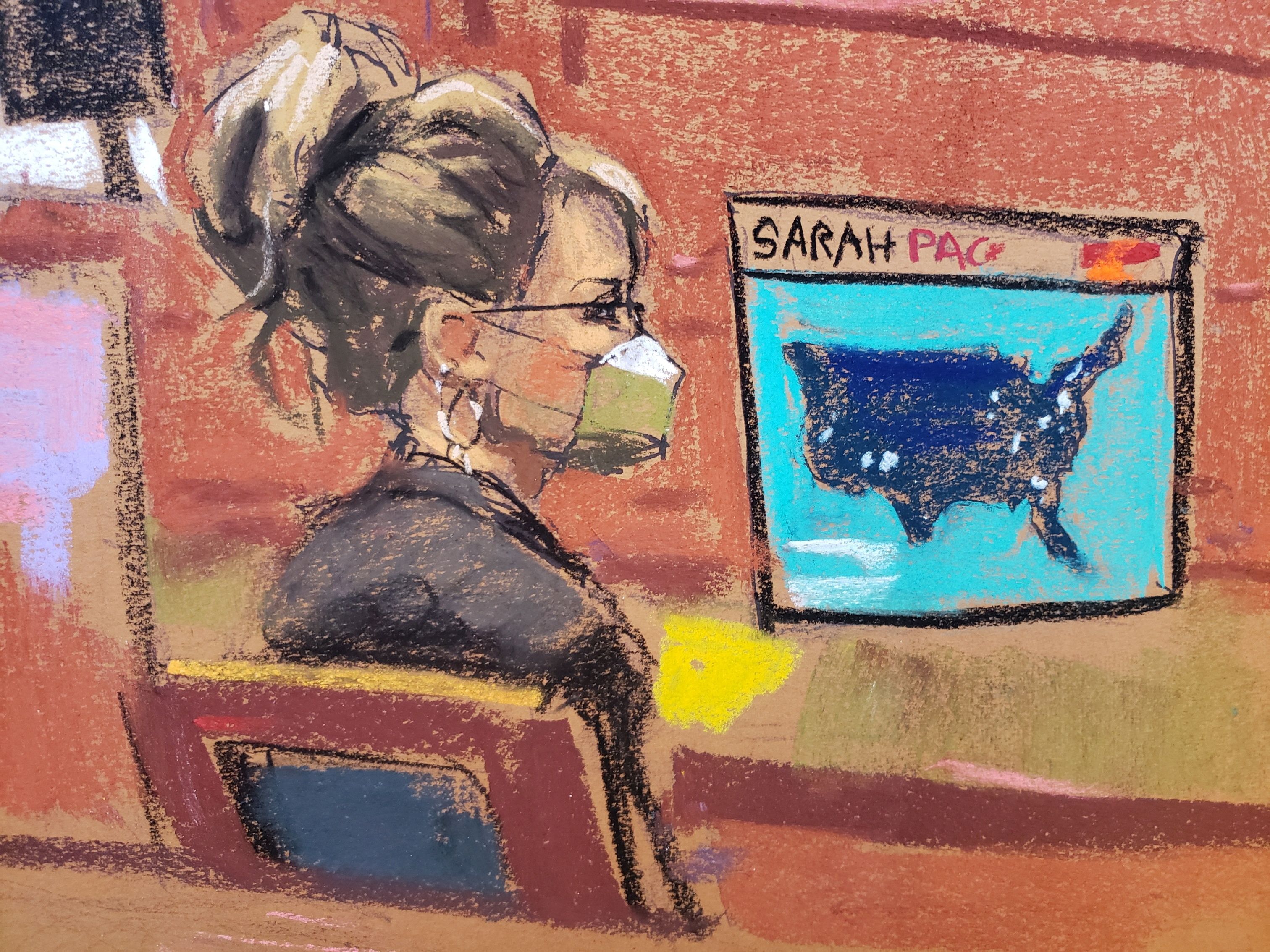Judge rules against Sarah Palin in New York Times defamation case as jury deliberates
Judge will dismiss former Alaska governor’s complaint for failing to meet ‘actual malice’ standards

Your support helps us to tell the story
From reproductive rights to climate change to Big Tech, The Independent is on the ground when the story is developing. Whether it's investigating the financials of Elon Musk's pro-Trump PAC or producing our latest documentary, 'The A Word', which shines a light on the American women fighting for reproductive rights, we know how important it is to parse out the facts from the messaging.
At such a critical moment in US history, we need reporters on the ground. Your donation allows us to keep sending journalists to speak to both sides of the story.
The Independent is trusted by Americans across the entire political spectrum. And unlike many other quality news outlets, we choose not to lock Americans out of our reporting and analysis with paywalls. We believe quality journalism should be available to everyone, paid for by those who can afford it.
Your support makes all the difference.In a surprise decision in Sarah Palin’s defamation case against The New York Times, a judge has tossed out the former Alaska governor’s lawsuit after deciding that no reasonable jury could determine that the newspaper and the editor at the centre of the trial acted with actual malice in publishing a 2017 editorial.
The ruling on 14 February came as a jury was in the middle of a second day of deliberations, following a week-long trial in which Ms Palin testified about an editorial that falsely linked her political action committee’s map, featuring crosshairs over Democratic-leaning congressional districts, to a 2011 shooting in Arizona that killed six people and injured then-US Rep Gabby Giffords.
“I think that there is one essential element that plaintiff has not carried its burden with – the portion of actual malice relating to belief in falsity or reckless disregard in falsity,” US District Judge Jed Rakoff said in a Manhattan courtroom.
“The law sets a very high standard, the court finds that that standard has not been met,” he said.
The jury will continue deliberations, after which the judge will move to dismiss the case. Jurors are not aware of the judge’s pending decision. An appeal from Ms Palin is likely.
The editorial, “America’s Lethal Politics”, criticised the rise in volatile political rhetoric in the aftermath of a 2017 shooting at a congressional baseball game, characterised by the editorial board as probable evidence of America’s increasingly “vicious” politics.
Ms Palin was not the subject of the editorial, but a map from her political action committee – featuring crosshairs over Democratic-leaning congressional districts – was cited as an example.
In the 2011 shooting, Jared Lee Loughner killed six people, including a nine-year-old girl, and gravely injured then-congresswoman Giffords when he opened fire in a supermarket parking lot.
In the course of editing the story, then-editorial editor James Bennet added a sentence saying that “the link to political incitement was clear.”
The editorial was promptly corrected.
Attorneys for the newspaper argued that Ms Palin’s legal team failed to prove that the error was motivated by “actual malice”, in which Mr Bennet would have knowingly published false information with indifference to the facts.
Judge Rakoff said he believes the case to be “an example of very unfortunate editorializing” but did not rise to the standard of actual malice – a standard established by the US Supreme Court in libel cases against public figures in 1967 with a ruling in another case involving the newspaper, The New York Times Co vs Sullivan.
Ms Palin’s complaint marked the rare case in which a libel suit against a newspaper makes it to trial, closely watched by press freedom groups, First Amendment lawyers and media organisations for its potential impact to the kinds of broad legal protections for journalists and publishers when writing about public figures.
The judge had previously dismissed the case when it came before him in 2017, but a federal appeals court overturned his decision and ultimately returned the case to his courtroom for a jury trial.
During her testimony, Ms Palin said she was “mortified” by the 2017 editorial, which revived the allegation of a link between her SarahPAC map and the 2011 shooting with he word “incitement”, which she alleged falsely implied a causal link between herself and the shooting.
“It was devastating to read, again, an accusation, false accusation, that I had anything to do with murdering innocent people,” she said from the witness stand on 10 February.
Mr Bennet testified last week that he added the word “incitement” in the course of rapidly reworking the draft before publication.
“I thought it was urgent to correct the piece as forthrightly as possible to acknowledge our mistake,” he said. “This is basic practice. This is the right thing to do.”
Though she acknowledged her large social media following and appearances on cable television, including highly rated programmes on Fox News, Ms Palin said she felt “powerless” and lacked a platform to combat the claims, and compared herself to David against the newspaper’s Goliath.

Attorneys for the newspaper appeared to try to undermine her claims of emotional and professional damage in the face of criticism, following her rhetoric and dozens of media appearances in her years in public office and on the Republican vice presidential ticket in 2008, and questioned whether she endured any financial impacts or other specific damages after the editorial’s publication.
New York Times attorney David Axelrod also pointed to Ms Palin’s statement in the wake of the 2011 shooting, in which she wrote that “journalists and pundits should not manufacture a blood libel that serves only to incite the very hatred and violence they purport to condemn”.
In closing arguments for the defence on Friday, Mr Axelrod rejected characterisations that the editorial was a “political hit piece”.
“If the intent was to defame, if the intent was to harm political rivals,” why would Mr Bennet admit the mistake, take responsibility and seek to correct the record following publication, he asked.
“This wasn’t a quiet correction,” he said.
Mr Bennet’s emails to staff and testimony show that he wanted to find “what the truth is,” according to Mr Axelrod.
“That’s not consistent with a conspiracy. That’s consistent with making a mistake and wanting to get it right,” he said.



Join our commenting forum
Join thought-provoking conversations, follow other Independent readers and see their replies
Comments